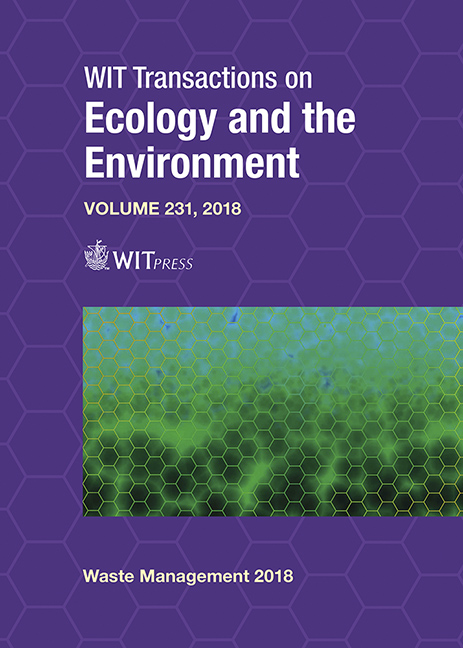BATCH REACTOR PYROLYSIS OF STABILIZED SEWAGE SLUDGE: PRODUCT ANALYSIS AND SULPHUR BALANCE
Price
Free (open access)
Transaction
Volume
231
Pages
9
Page Range
357 - 365
Published
2019
Paper DOI
10.2495/WM180331
Copyright
WIT Press
Author(s)
JAROSLAV MOŠKO, MICHAEL POHOŘELÝ, SIARHEI SKOBLIA, ZDENĚK BEŇO, OLGA BIČÁKOVÁ, ŠÁRKA VÁCLAVKOVÁ, MICHAL ŠYC, KAREL SVOBODA
Abstract
Prior to sewage sludge application to agricultural soil, the sludge should be treated appropriately to suppress its negative features like content of microorganic pollutants or leaching heavy metals. Pyrolysis has been investigated as one way of producing sewage sludge-derived biochar (solid pyrolysis residue) which is stable and less toxic than sewage sludge. A significant amount of heat must be provided to the pyrolysis process due to its endothermic character. To make the process economically and energy efficient, the necessary heat can be obtained by the combustion of primary pyrolysis products (pyrolysis oil and gas), however in the case of sewage sludge, attention must be paid to the resulting gaseous pollutants due to high nitrogen and sulphur content. Slow pyrolysis of stabilized sewage sludge in inert helium atmosphere was performed at temperatures 400–800°C in order to examine the influence of pyrolysis temperature on the properties of pyrolysis products and sulphur distribution amongst these products. Pyrolysis at higher temperatures resulted in lesser biochar yield and promoted gas yield. At temperatures of 500°C and higher, over 50% of energy bound in the input sewage sludge was transformed to liquid and gas products. Finally, the effect of pyrolysis temperature on sulphur distribution amongst pyrolysis products was only marginal.
Keywords
sewage sludge, pyrolysis, sludge-derived biochar, mass balance, energy balance, sulphur balance, sulphur species





